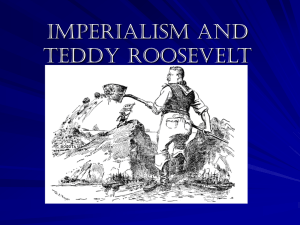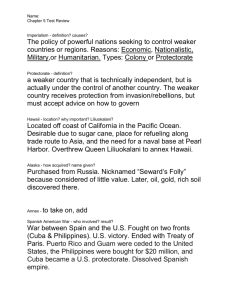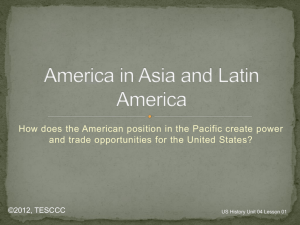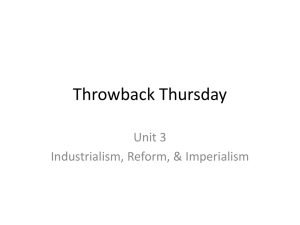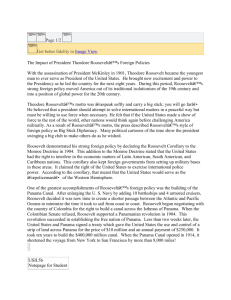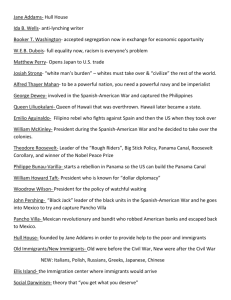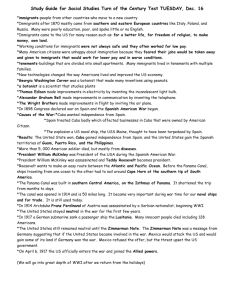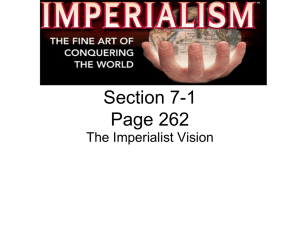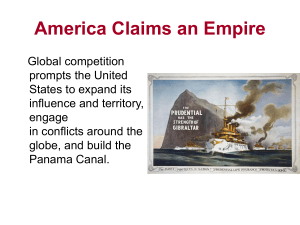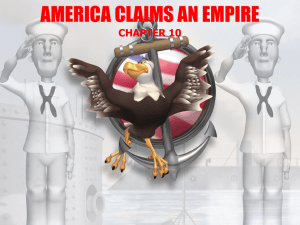Spanish American War and American Expansionism
advertisement
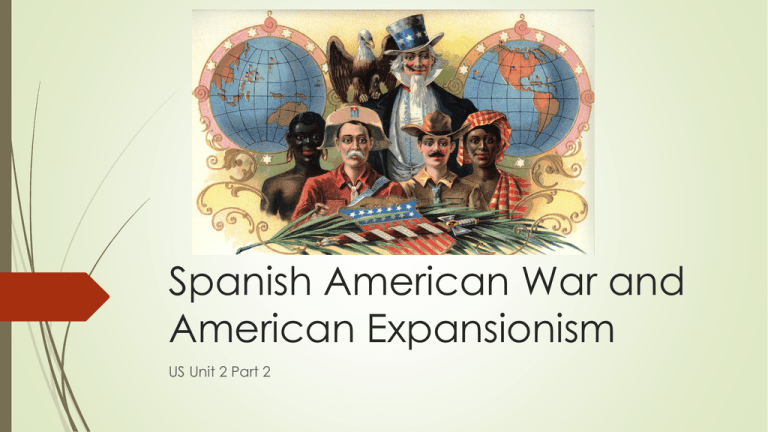
Spanish American War and American Expansionism US Unit 2 Part 2 1.What conclusions can be drawn from the newspaper cover? 2.What emotions would this produce in many Americans at the time? Yellow Journalism Sensational or exaggerated story writing loosely based on facts. It is intended to motivate people into a particular action. Even if it requires bending the truth. Used both in terms of writing and images. William Randolph Hearst owned many of the major newspapers in the U.S. and was famous for using this. Nationalism Pride in one’s country or belief that your country is the best. As America prospered in the late 1800s this feeling began to rise with Americans and Yellow Journalists helped promote it. Imperialism A policy by which nations attempt to create empires by dominating weaker nations economically, politically, or militarily; also called expansionism. The U.S. wanted to do this in order to be seen on the same level of power as European Nations. The Monroe Doctrine Policy of President Monroe that the United States would consider any European interference in the nations of Latin American as an unfriendly act. Under President Theodore Roosevelt he extended the ideas of the Monroe Doctrine with “Roosevelt Corollary to the Monroe Doctrine,” claiming the legitimate use of military force to achieve expansion and trade. Causes of the Spanish American War Cuban Rebels had been fighting against their Spanish rulers for years but it was not until yellow journalists reported that Spain blew up the U.S.S. Maine in Havana Harbor that Americans took interest in fighting Spain in Cuba. The conflict quickly expanded as the U.S. used the sinking of the Maine as an excuse for an all-out war against Spain and pledged support to all rebels including Cuban rebels who were fighting Spain. Theodore Roosevelt and the Rough Riders Teddy Roosevelt was Assistant Secretary of the Navy at the start of the war. He was eager to seek glory in the war and to do so he created a all volunteer unit of the toughest fighters he could find to go fight in Cuba. Roosevelt attracted all kinds of men from the Southwest primarily and their wild nature gave them the nickname the Rough Riders. The Rough Riders came to represent the American Military Spirit and fought in all major battles in Cuba. Key Battles of the War El Caney and San Juan Hill: Famous battle where the rough rider won even though outnumbered. Santiago: Decisive U.S. land battle victory in Cuba Manila Bay: Major U.S. naval victory in the Philippines Buffalo Soldiers: All Black regiments with white officers who fought in every major battle. Results and Effects of the War Spain was humiliated and lost all of its’ remaining colonies. The U.S. gained Puerto Rico, Guam, and the Philippines as territories and established a protectorate over Cuba. The U.S. is now considered a global power. Yellow Journalism RAFT Role – Reporter for a Hearst newspaper Audience – newspaper readers in America Format – a “yellow journalism” article describing events of the Spanish-American War Topic + strong verb – Americans Defend Vicious Attacks after the Sinking of the Maine: The Real Story. DO NOW Would you consider the United States today to be an empire? Why or why not? Provide evidence. America at It’s Limits According to the census of 1890, the American frontier was “closed”. This led to a desire for the United States to go beyond her physical borders. What does this mean? Growth Factor #1 • As a result of the Civil War and Reconstruction, Southern land, crops, animals, cities were destroyed and/or ravaged by the Civil War. Railroads were demolished and displaced people needed places to relocate. Growth Factor #2 Completion of the transcontinental railroad in 1869 made movement of people and transportation of products easier, safer, and faster across the United States. Growth Factor #3 Settlement of the West was attractive due to cheap land, mineral discoveries, and farming/ranching lands Growth Factor #4 Growth of factories and cities profited from an overabundance of immigrant labor arriving from Europe and Asia and an abundance of natural resources. Alfred Thayer Mahan admiral and naval historian whose theories on the relationship of sea power and world commerce developed U.S. imperialistic foreign policy. Henry Cabot Lodge Massachusetts Senator supported American expansion as a world power. He worked for the Panama Canal and naval bases to support world trade. Sandford B. Dole Born in Hawaii as a son of missionaries, Dole became President of the Republic of Hawaii when Queen Lili'uokalani was overthrown. In 1900 he was appointed Governor of the Territory of Hawaii after its annexation as a U.S. Territory following the Spanish-American War. He later became a federal judge. The Panama Canal There was an increased the need for a quicker water route between the industrial centers of the eastern U.S. and markets on the West Coast and in Asia. This caused a movement to build the Panama Canal which was completed in 1914. The Panama Canal cont. Physical effect - made travel faster and shorter from Atlantic Ocean to the Pacific Ocean) and increased the possibility of trade and movement. Building the canal created a U.S. presence in Panama (Panama Canal Zone) until 1999. Initial work led to engineering discoveries and medical solutions to problems of malaria and yellow fever.
